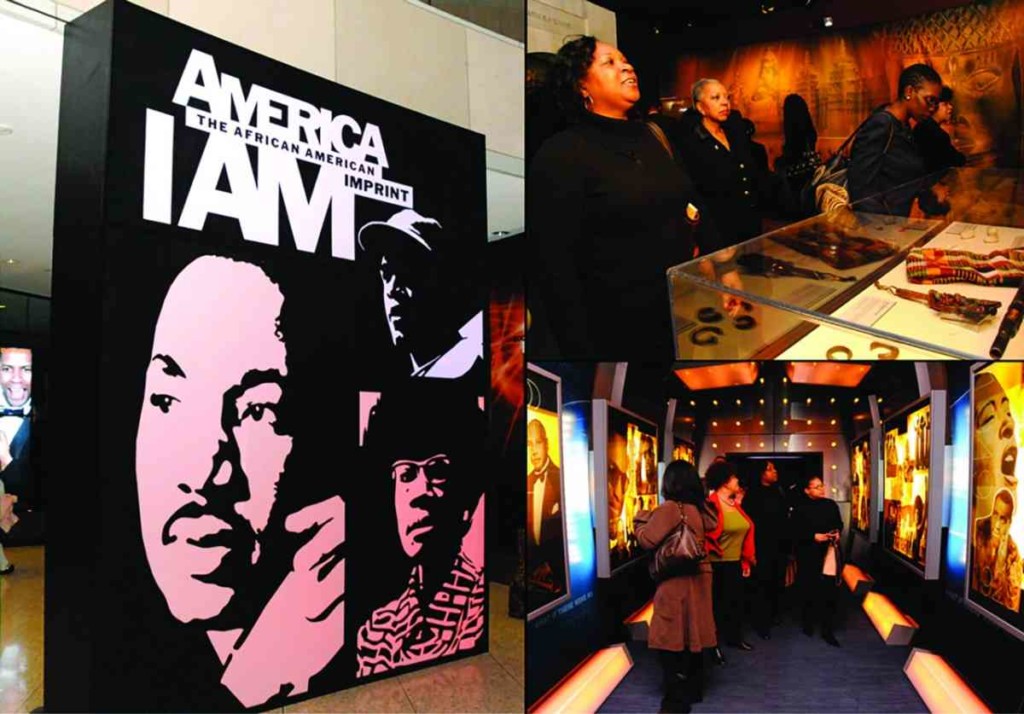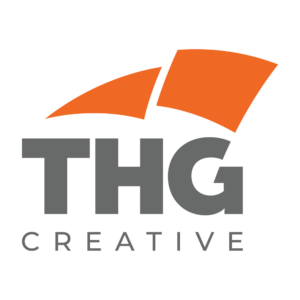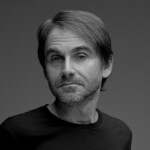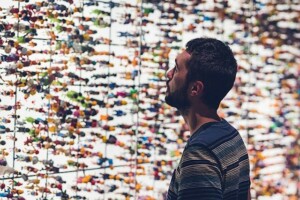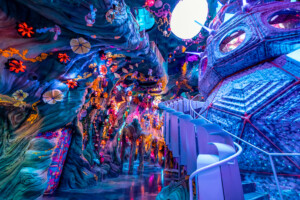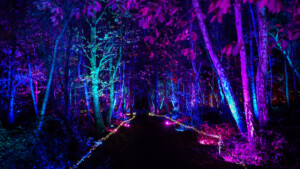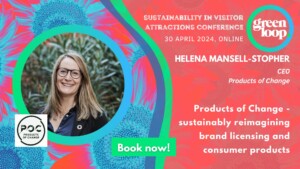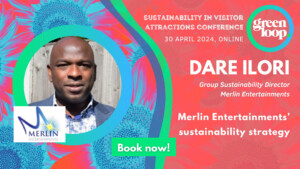The Hettema Group (THG) is a world renowned creator of award-winning experiential entertainment and uniquely creative projects.
The company’s gift for storytelling is nowhere more evident than in their concept, design and production of the One World Observatory atop the one World Trade Centre in New York. The Observatory offers visitors a spectacular panorama of the city, and uses cutting-edge technology and media-based elements to immerse visitors in the history of New York and the personal stories of the people who created the One World Trade Centre.
 President and Creative Executive of THG, Phil Hettema (pictured left), says that of all the projects he had been privileged to work on, ‘nothing comes close to the symbolic importance of One World Observatory’.
President and Creative Executive of THG, Phil Hettema (pictured left), says that of all the projects he had been privileged to work on, ‘nothing comes close to the symbolic importance of One World Observatory’.
Hettema spoke to Blooloop about his background and storytelling, some of his most outstanding projects, and, of course, the One World Project.
He describes himself as a “child of the theme park age.” As a Californian, he visited Disneyland regularly as a child, and it captured his imagination. Later, when studying music at California State University, Long Beach, it made sense to apply for a part-time job at Disneyland. It turned out to be a life-changing decision.
“I ended up working in the costume department… Because I knew all of the stories so well I could walk through the warehouse and say “I know what that costume is, ” and “that’s this costume, and that was from that story.”
His enthusiasm marked him out, and he was given opportunities both to take on responsibility and to express himself creatively. Gradually, it became clear that this was something that would be a compelling career choice.
“I decided if I really wanted to do this, I needed to figure out a bit more about what I was doing, so I quit my job at Disney and went back to design school at Art Centre College of Design in Pasadena, because I really wanted to get a solid background in understanding design and communicating visually.”
After leaving Art Centre, he did a number of things, including building puppets for Sid and Marty Krofft, before reconnecting with Bob Jani, who had been the Vice President of entertainment for all the Disney parks for many years.
“He loved to mentor young people, and gave dozens of people their start in the business. He brought me on board that company, as an in-house project manager/project designer, ” explains Hettema.

He worked with Jani on a variety of projects, which led him firstly to the Los Angeles Olympics in 1984 where he became one of the three production supervisors for the opening and closing ceremonies, and then on to New York for the Statue of Liberty Centenary.
The Universal Years
In the late ’80s/early ‘90s, Hettema went to work for Universal Studios, initially as a show producer for their theme parks.
“It was a very small creative organisation at that point: I think I was number six. I produced the show for Hollywood Park, and we did it in about six months. It was very fast, but turned out to be very successful.”
He went on to spend fourteen years at Universal, the last ten or so as Senior Vice President for Attraction Development for the parks worldwide, which included any new attractions put into any of the parks plus the master planning for the Osaka park. He also led the creative concept team for the second theme park in Orlando, ‘Islands of Adventure’, which he describes as “one of the most satisfying projects. Who gets to have an assignment like that? From a blank sheet of paper, to start to conceive and put together the ideas for a major theme park. That was a fantastic time, a fantastic opportunity.”

He explains, “‘Islands’ was an especially exciting project for me because it was a park based on stories and immersion into those stories. We created a whole land called ‘The Lost Continent’ that was evocative of the history of storytelling and myths and legends: a rich tapestry of ideas with a unifying experience of laughter. I’m very proud of that park.”
During a lull in the industry when there was little capital being put into new attractions, and no prospect of a new big theme park on the horizon, Hettema decided it was time to start seeking new challenges.
“I just wanted to do something different and a little more challenging".
The Hettema Group Is Born
Not long after leaving Universal, Hettema was called by a representative of the King of Jordan in the Middle East, who had an idea involving the creation of a new development community in Jordan in Aqaba.
“That was a project that really launched our company. We began doing a lot of research and design and created a fictional factional history of that site based on geological data, the seismic history and the history in general. We talked about how a  city could have been built up there, which pieces of the foundation might have been laid 1500 years ago, and which 700 years ago, and literally designed a city that was conceived in sedimentary layers and was still alive today.”
city could have been built up there, which pieces of the foundation might have been laid 1500 years ago, and which 700 years ago, and literally designed a city that was conceived in sedimentary layers and was still alive today.”
THG has done a substantial amount of work subsequently in the Middle East, but this was the beginning. While working on the project, Hettema began to get calls about other, more typical theme park and museum projects.
“Our company is fundamentally about the belief that if people experience things at a visceral level, whether it’s sensory or we make them see something in a new light, they’ll remember that story in a more compelling way. They’ll take it with them; they’ll have more of an emotional connection with it. I think that is the common thread through everything we try and do.”
Beyond All Boundaries
THG then had an opportunity to develop a project for the WWII Museum in New Orleans – the award winning Beyond All Boundaries 4D film. World class historians worked on the story, and Tom Hanks came on board as the executive producer, becoming very involved with the script, and ultimately narrating the project.

The exposition involves an hour-long experience; a large scale multimedia presentation with a screen 130 feet wide by 60 feet tall, multiple layers with physical moving sets, multiple layers of projection and moving seats:
“…all in the service of telling this massive story in a compelling way, and in a way that helps grasp the global scale of it. That’s certainly one of the projects that is really meaningful, particularly for me. The reason it was of interest in the first place was because my dad was a pilot out of England over Germany during the war, and so it was our chance to talk through those things and bring him into that story. I had a personal connection, and I thought if we could make that same kind of personal connection with the audience, that would be a pretty powerful thing.”
As the Group has moved forward, it has had the opportunity to do increasingly exciting projects for museums and in theme parks, including in Asia where there is a big market for new theme park experiences.
Forging that personal connection between the story and its audience has remained at the core of the vision.
“The common thread is always ‘who is the audience, and what is the story we’re telling, and how do we make it impactful for them?’”
The High Roller
He continues, “Four years ago a good friend of mine from Universal days, Greg Miller, now Head of Project Development as Caesar’s Entertainment, said: ‘We want to build the world’s largest observation wheel.’ That was the brief, and we took it from there. We brought in the structural engineer, did all of the conceptual design, and worked out a way to do what we think is the most beautiful wheel in the world, overcoming some real technical challenges.”
Ultimately, they created the High Roller, a ground-breaking structure with 28 cabins that can hold 40 people apiece: “It’s a complete experience, helping people to see Las Vegas in a new way.”

The Studio Structure
“As the studio has evolved, we have come to think of ourselves in the three major divisions of the studio.
- The first is ‘show design’: the creative design and storytelling element.
- The second is architecture. Understanding the space we occupy is a fundamental piece of experiential storytelling: if you don’t understand and control the space, it’s very hard to be able to tell a complete story. We don’t feel comfortable in a situation where there’s someone else designing the box, and we’re designing what’s in it, because we think as the line between media and architecture blends, it is important to think of the space as a storytelling tool.
- And then the third element is media design and production. Increasingly, as technology moves forward, what we can create is almost unlimited, or limited only by our imaginations. Projection is getting better and better; as is rendering capability; the ability to visualise something is improving, but with all that, the mantra we keep in mind is ‘we use technology to serve the story, never the story to serve technology.’”
He expands on this: “It’s very seductive to say ‘Wow, there’s this cool new projector and we could combine that with this new 6-degree motion simulator platform, and that would be a really cool experience, ’ but if that’s what’s guiding us and we bend the story round to fit that, within three to five years that technology will be outdated: there will be new, replacing technologies coming in, almost on an annual basis.
"But if we start with the story and say ‘here’s the powerful story we want to tell’ and then say ‘what are the best tools currently available to tell that story with?’ Even if those tools become a little dated, the story remains fresh and impactful, and will have a much longer span of being compelling for an audience.”

Hettema contends that stories are the way we understand the world.
“I think they give us context for understanding. A fact in isolation may make perfect logical sense, but until we understand why it matters and makes a difference, it just doesn’t have the same impact.”
He adds, “I think that if the storytelling is good, then you can really capture your audience. I think the nature of people, of all of us, is that we want people to tell us stories. If you can get your audience’s attention and start weaving a compelling tale, they will follow you anywhere. That’s where some of us in the theme park business get a bad name because we use the word ‘theme-ing’ as a gloss, all over ‘we’ll just put in some colourful architecture and change the atmosphere a bit then we’re storytelling and creating a themed experience’ well, I think it’s much more subtle than that, it requires much more discipline to be consistent; to tell a clean and clear story.”
One World

As Hettema points out, projects like One World happen once in a lifetime, if that. Hettema and THG had to take into consideration not only all the usual factors but also the profound emotional weight and consequent responsibility of being on the 9/11 site.
“Though the brief was to create an experience that was looking forward optimistically to the future, it was clear to us from the outset that the subtext – ie. this is being built on the history that that site occupies – was inescapable.”
What they set out to do – and clearly achieved – was to create something that acknowledged what had happened in the past and therefore made it possible to look forward and say: ‘we’ve rebuilt here, and there is a future and it’s bright and it can be positive.’
The phrase they came up with to encapsulate this is ‘See forever’.
“‘See forever’ actually has multiple meanings. It obviously has a geographical reference: you can see for a long distance.  You can also chronologically ‘see forever’- or for a long period of time. But the one I like the best is that ‘forever’ is also a vision for the future, regardless of time or distance. And so we wanted people to contemplate a little bit about ‘where am I in this big story?’.”
You can also chronologically ‘see forever’- or for a long period of time. But the one I like the best is that ‘forever’ is also a vision for the future, regardless of time or distance. And so we wanted people to contemplate a little bit about ‘where am I in this big story?’.”
The team wanted to acknowledge from the beginning of the experience that the site is a global crossroads.
As everyone enters and passes into the welcome area, the place they come from pings on the huge map displayed up above, and the word ‘welcome’ appears in many different languages:
…“dynamically tuned to the most people that are coming in at any one moment, so if there’s a large group of Chinese appearing, it says ‘welcome’ in Chinese. And the subtle context of that is that we’re all here together, we’re all from all over the world, and that is what this place is now and has always been. And then we take a step back and listen to the voices of the people who built the building and their personal stories.”
Over a hundred people who were involved in the building’s creation – from the janitors, pipe setters, iron workers to the architects – were interviewed, and the interview footage captures the essence of why this project was important to each of them.
“What we hoped to do was create a sense of continuity over the site looking back, present and forward, and I think we really succeeded in that in the next step.”
Visitors are taken into an area which evokes the bedrock of the building that it is anchored in, which has been there for half a billion years: a symbol of permanence and strength.
“When you step into the elevators you actually see that same bedrock that the elevator shaft sits in. And, as the elevator moves up out of that and we break the surface, having entered on the basement level, we’re able to see Manhattan around us: not the Manhattan of today, but of about 1000 years ago, when it was nothing but swamps, and what has subsequently become landfill.

"As you rise in the elevator, you watch a time lapse of the development of Manhattan, as the landfills come in and the buildings grow. And the reason for that was not just because it was a fun trick we could do, but because we really wanted to create the sense of a timeline looking back saying ‘this place has a history, long before 9/11, and it has a future as well’.”
As the elevator moves up, the chronology develops, and the years can be seen passing. The Twin Towers appear – and disappear when the timeline reaches 2001.
This is the only place the Twin Towers are directly referenced or seen, in the wider context of the much larger story, as Hettema puts it “…of where we’re going. And as we reach the top of the elevator, we actually see the tower assemble itself, first the steel, and then the walls around us, so by the time we arrive on the 102nd floor we are fully enclosed. It’s captured people’s imaginations, I would say.”
When the Group considered other observatories, they felt that the most important story they were telling concerned, naturally, the view.
“ But that can be kind of an impersonal thing and I have a term for it: I call it ‘the Grand Canyon Syndrome’: if you go to the Grand Canyon there’s a common experience of people walking up to the edge, and they look at it and it’s spectacular and it’s huge. And they look at it for about five minutes, and then it’s like ‘well okay, now what do we do?’ You’ve kind of absorbed it, and then you move on. So we wanted to give people a richer context.”

As a result, when people step off the elevator, instead of being permitted to make their way to a window and the view, they are escorted into a theatre and shown a montage of projection mapped images over a dimensional surface that represents the diversity of the city; its rhythm and pulse, giving a number of different points of view:
“… going all the way down to the sidewalk, and watching feet go by, children playing and sprinklers people enjoying food; people in all different sorts of ethnic neighbourhoods. It goes very quickly, but our hope is that people start to think about the city from their own point of view, and wonder ‘how do I understand the city?’”
By the end of the presentation, people will have formed a strong notion of their own personal attachment to the city, and at that point the theatre wall breaks into pieces and raises and exposes the skyline of upper Manhattan.
“That’s a moment that usually gets a pretty big gasp and even applause from some people. It creates an unforgettable reveal experience and helps people look at the skyline in a whole different way.”
 Another aspect that resonates with people is the ‘Sky Portal’, real time cameras on the top of the building looking straight down to the sidewalk below.
Another aspect that resonates with people is the ‘Sky Portal’, real time cameras on the top of the building looking straight down to the sidewalk below.
Visitors can walk over a portal in the floor and look down to see in real time what’s going on in the street below, as if walking over a glass ceiling.
“That’s the kids favourite part; they just love to jump or crawl over that.”
Another interesting innovation is what Hettema refers to as “…sort of a real time ambassador connecting to the city.”
It consists of a circular array of screens. Standing in the middle, the host can use the control to change the images, calling up an enormous amount of data in different categories about the city, whether it’s about particular buildings that can be seen outside or what’s going on in the city, cultural or sporting events: anything relevant or of interest to the crowd gathered, connecting to real time information feeds about what’s going on.

And the finale to the experience prevents any sense of anti-climax that might be experienced at other observatories after looking at the skyline.
Hettema says, “When they’re finished with the experience, we take them down in a very unexpected way, that again comes from our looking at other observatories and always feeling like the experience is often ‘well I’ve come to the top, I’ve looked around, I’ve seen the view, and now it’s time to go down and I have to wait in a long line for the elevator.’ My theatrical impulses are that I always want to leave the audience thinking they’ve gotten something more than they expected, a surprise at the end.
"When the elevator doors close, and they’re able to look out the windows again, instead of going down the shaft appears to move sideways, break through the side of the building into the air and it floats down in a pretty dynamic spiralling arch around the building, and you see yourselves reflected in the side of the building over the 9/11 site; and then back into the door in the side of the building and then down to the basement. We calibrated it to have just a little bit of thrill in it, just a little bit of fun. And that’s how you conclude your visit.”
He adds, “We are really honoured and thrilled to have been able to participate in the project, we had a great partnership with Legends, the company that was operating the observatory, and with the Port Authority of New York.”
Getting the Story Just Right

Hettema considers that this project – along with the Islands of Adventure and the WW2 Museum, are the ones for which he would most like to be remembered, if he had to choose.
He qualifies this by saying, “This one is maybe the most culturally important, in that it was a little sensitive to get the story just right. I humbly feel that we did a pretty good job; that we felt that pulse correctly, and it seems to be resonating with people in a really positive way. It could have come off as quite commercial but I think we got it right.”
But the story goes on.
“We have a fantastic team of creative folks: I’m so proud of the team we’ve been able to gather. There are loads of exciting things in the immediate future. We’re working on a site in Saudi Arabia; we’re doing theme park sites in China and in Korea; and we’ve had a lot of fascinating conversations because of our work in New York. We love doing small projects as well as big projects, and I think it just comes right back to the beginning: where is there a compelling story to be told in a really creative and engaging way?”

Images: The Hettema Group, One World Observatory, Universal
